I have been building a wpf user control to act as a data navigator for use on various forms. It takes as it's data source the underlying ICollectionView from a view model as do other controls on forms like grids. The view on the grid is setup like so;
Public Shared ReadOnly DataIcvProperty As DependencyProperty = DependencyProperty.Register("DataIcv", GetType(ICollectionView), GetType(DataNavigator), New FrameworkPropertyMetadata(Nothing, New PropertyChangedCallback(AddressOf OnDataIcvChanged)))
<Description("The CollectionView (as an ICollectionView) to be passed to the DataNavigator control"), Category("Vtl DataNavigator Main Properties")>
Public Property DataIcv As ICollectionView
Get
Return CType(GetValue(DataIcvProperty), ICollectionView)
End Get
Set(ByVal Value As ICollectionView)
SetValue(DataIcvProperty, Value)
End Set
End Property
Private Shared Sub OnDataIcvChanged(ByVal d As DependencyObject, ByVal e As DependencyPropertyChangedEventArgs)
Dim dn As DataNavigator = CType(d, DataNavigator)
dn.RecordsCount = dn.GetRecordCount
dn.Records.Text = dn.RecordsCount.ToString
dn.UpdateUi()
If e.OldValue IsNot Nothing Then
RemoveHandler dn.DataIcv.CollectionChanged, AddressOf dn.OnDataIcvCollectionChanged
RemoveHandler dn.DataIcv.CurrentChanged, AddressOf dn.OnDataICVCurrentChanged
RemoveHandler dn.DataIcv.CurrentChanging, AddressOf dn.OnDataIcvCurrentChanging
End If
If e.NewValue IsNot Nothing Then
AddHandler dn.DataIcv.CollectionChanged, AddressOf dn.OnDataIcvCollectionChanged
AddHandler dn.DataIcv.CurrentChanged, AddressOf dn.OnDataICVCurrentChanged
AddHandler dn.DataIcv.CurrentChanging, AddressOf dn.OnDataIcvCurrentChanging
End If
End Sub
Private Sub OnDataICVCurrentChanged(ByVal sender As Object, ByVal e As EventArgs)
Record.Text = (DataIcv.CurrentPosition + 1).ToString
UpdateUi()
End Sub
Private Sub OnDataIcvCurrentChanging(ByVal sender As Object, ByVal e As EventArgs)
'MessageBox.Show("I've Changed")
End Sub
Private Sub OnDataIcvCollectionChanged(ByVal sender As Object, ByVal e As EventArgs)
MessageBox.Show("I've Changed")
End Sub
and a typical form might be like this:

Now what I would like to be able to do is determine when the underlying view collection is dirty so that I can use that info to enable of disable things like the save button on the navigator control. I have tried both CurrentChanging, and CollectionChanged. The former I would have thought was the more promising of the two, and whilst it does fire when I select or create new rows on the grid it does not fire when I change the contents in a cell. I would like to know that a row, or rows are actually dirty before enabling the save button.
Thanks